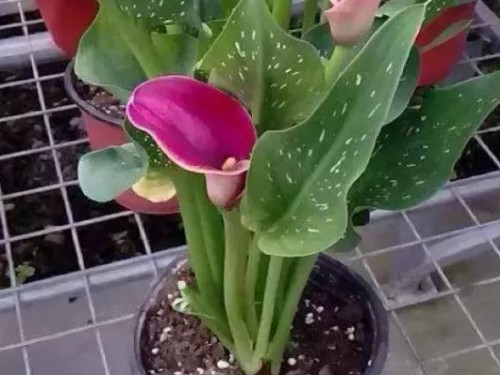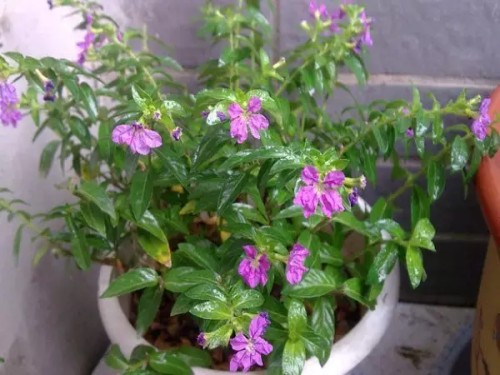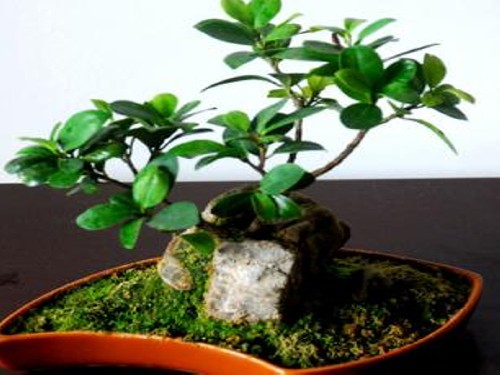Culture method of potted colored calla
Colorful calla lily is a plant of Araceae, Millennium Health Rent and calla lilies, with rich colors such as pink, white, yellow, purple, red, orange and green, and its flowers look like horseshoes, so it is named calla lilies. Colorful calla lilies have high ornamental value, not only can make flower decorations, flower baskets, bouquets, etc., but also one of the very important cut flowers, which is loved by many flower lovers. The following is to introduce the culture methods of colored calla lilies:

The suitable temperature for the growth of colored calla is 15-25 ℃, the daytime temperature of flowering base is 16-19 ℃, the night temperature of white variety is not lower than 13 ℃, while that of colored variety is not lower than 16 ℃. If the temperature is higher than 25 ℃ or lower than 5 ℃, the plant will be forced to dormancy.
The cultivation soil can be mixed with 2 parts of garden soil, 2 parts of rotten leaf soil and 1 part of peat soil. When adding a small amount of multi-compound fertilizer, the family should also pay attention to the following three points when protecting calla lilies:
First, its heart leaves avoid wet water, usually watering carelessly, so that sewage drips into the heart of the leaves, which will cause soft rot.
Second, when applying fertilizer, it should be applied from the edge of the basin, and the fertilizer liquid should not be drenched on the petiole or splashed into the heart of the leaves, otherwise it is easy to yellow leaves or rot.
Third, calla lilies are afraid of smoking, otherwise they will cause leaves to yellowing and buds to fall off.
After withering the horseshoe lotus, the amount of water should be gradually reduced, moved outside in late April, placed in a slightly shaded place for maintenance, and watered once a day or every other day to keep the basin soil slightly moist, not dry or waterlogged. And sprinkle water on the ground near the flowerpot to increase air humidity.
It likes warm, humid and sunny environment, and is not tolerant to cold and drought. After flowering, the amount of water should be gradually reduced, and when the leaves turn yellow and wither, it should be completely stopped watering. During the growing season, thin liquid fertilizer should be applied once a month, and when the scape is extracted, it should be increased to once a week until the end of flowering. For domestic potted plants, multiple slow-release compound fertilizers can be used, or 0.2% urea + 0.1% potassium dihydrogen phosphate mixed solution.
After June, the leaves gradually withered and yellow and entered the dormant period, when it was necessary to cut off the withered leaves, control watering, stop fertilization, move the flowerpot to a ventilated and cool place to promote its dormancy, pour the tuber out of the flowerpot after the weather turned cool in autumn, take out the large tuber, replant it with fresh and fertile culture soil, and then gradually increase the amount of water when the tuber germinates, and restore fertilization at the same time, so that it can continue to bloom.
The most important maintenance of colored calla lilies is the hydroponic management after planting. In the early growth stage, colored calla lilies should be wet, but in the later stage of flowering, proper water control is needed. After anthesis, a dry environment is needed to enrich the bulbs and force them to sleep.
At the same time, fertilization on colored calla is also a very important means of conservation, and appropriate amount of topdressing is needed when sufficient base fertilizer is applied. Generally, 1000 calcium nitrate is sprayed on the leaf surface twice before flowering, with an interval of 7 days, in order to promote flowering. After flowering, compound fertilizer is also needed to promote the fullness and maturity of colored calla lilies.
Culture skills:
① basin soil should be cultivated with sandy soil which is rich in humus, loose, fertile and permeable.
The optimum growth temperature of ② color calla is 18 ℃-23 ℃.
The watering amount of ③ should be large in the early stage of growth to keep the soil moist, the watering amount should be properly controlled in the later stage of flowering, and dry in summer dormancy period to keep the basin soil moist.
④ avoid pouring water into the leaf sheath, otherwise it will cause rot.
On the basis of sufficient base fertilizer, ⑤ can apply 0.2% complete fertilizer once a month during the growth period.
⑥ was sprayed twice every other week with 1000 times liquid calcium nitrate solution before flowering.
⑦ needs to apply compound fertilizer after anthesis to promote the fullness and maturity of the bulb.
Time: 2019-06-01 Click:
- Prev

The cultivation method of purple calyx flower
Purple calyx distance flower is also called purple sky star, for celandine calyx distance flower genus, erect small shrub. Purple calyx distance flower because of luxuriant foliage, dark green leaves, evergreen, and has luster, beautiful flowers and annual flowering, easy to form, resistant to pruning, has a strong greening function and ornamental value
- Next

What about the rotten roots of banyan bonsai?
Most of the rotten roots are caused by the lack of a good grasp of the watering interval and frequent watering. Potted flowers, such as excessive watering, often cause rotten roots, so watering flowers with appropriate amount of water, generally should not be watered every day, depending on the dry and wet condition of the pot soil, usually watering once every 5 days. If the potted flowers have rotten roots, they should be treated immediately.
Related
- Fuxing push coffee new agricultural production and marketing class: lack of small-scale processing plants
- Jujube rice field leisure farm deep ploughing Yilan for five years to create a space for organic food and play
- Nongyu Farm-A trial of organic papaya for brave women with advanced technology
- Four points for attention in the prevention and control of diseases and insect pests of edible fungi
- How to add nutrient solution to Edible Fungi
- Is there any good way to control edible fungus mites?
- Open Inoculation Technology of Edible Fungi
- Is there any clever way to use fertilizer for edible fungus in winter?
- What agents are used to kill the pathogens of edible fungi in the mushroom shed?
- Rapid drying of Edible Fungi

